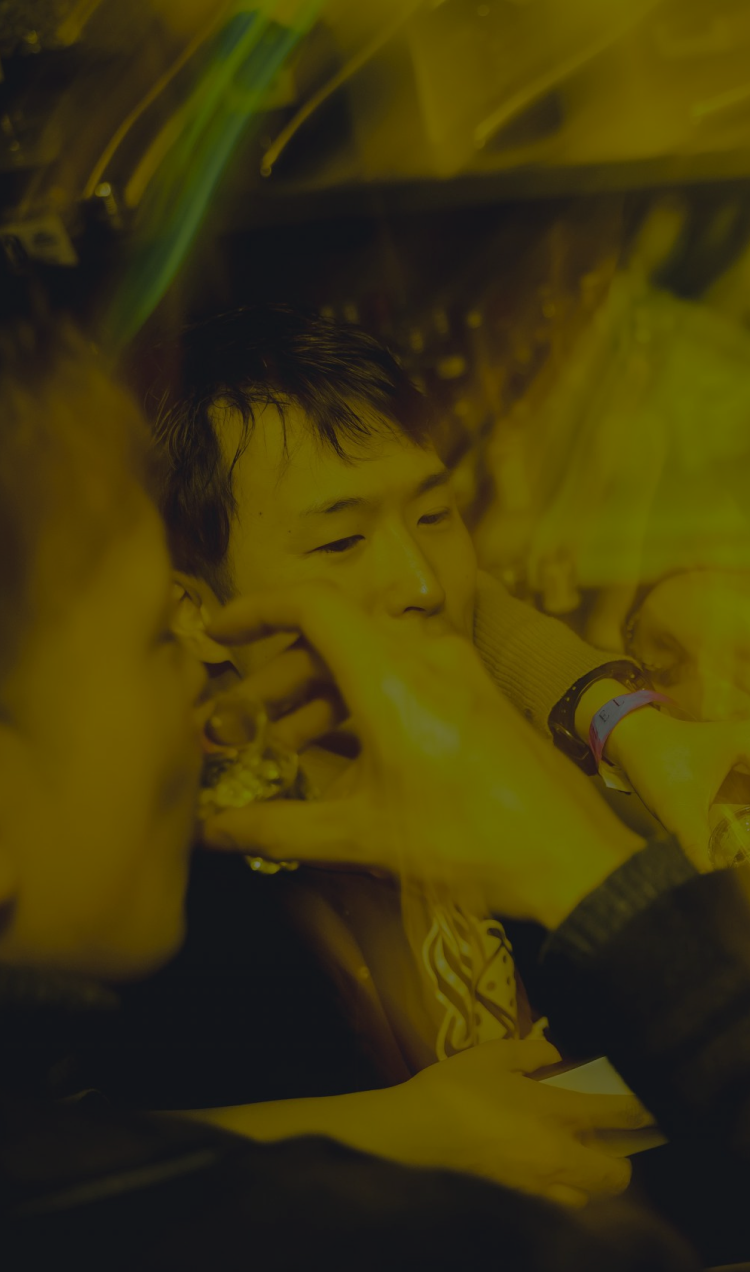Alcohol companies, social media, and retailers are quick to jump on drinking trends because they can be quite profitable. Whether it’s “Mommy Loves Wine” T-shirts, happy hour specials in college towns, or an “it’s 5 o’clock somewhere” post on Instagram, these trends normalize alcohol abuse and give people a sense of community, feeding into the myth of alcohol being a social lubricant.
While some might say drinking trends are harmless fun, they can have real consequences for people at risk for addiction. After the trends fade, what happens to people who develop a dependency on alcohol?
We’re taking a closer look at how drinking trends normalize alcohol abuse and what to do if you’re struggling with your relationship with alcohol.
The Varied Cultures of Alcohol Misuse
Mommy wine culture, frat house binge drinking, post-work cocktails – the cultural practices surrounding social alcohol use abound.
Drinking cultures can lead people to believe that social drinking is the norm and can help manage the stresses of everyday life. Claims about the benefits of moderate alcohol use reinforce these beliefs, leading people to think that their drinking is not only safe but also healthy.
While many people can moderate their drinking habits successfully, the social acceptance of drinking trends can quickly lead to an alcohol addiction that requires immediate therapeutic intervention.
If you can identify the drinking trends, you can proceed with caution and make a more informed decision about their impact on your relationship with alcohol.
Mommy Needs a Drink
Wine mom culture has reached critical mass on social media with memes, printed T-shirts, engraved wine glasses, cartoons, and TikTok videos.
The general theme of mommy wine culture is that any mother needs a glass of wine to deal with the stresses of parenting, leading to catchy phrases such as:
- “A glass of wine to deal with the whines.”
- “Boxed wine is a mommy juice box.”
- “Wine glasses are mommy’s sippy cup.”
Any tired mother scrolling Facebook after their child finally falls asleep could laugh and hit subscribe, but normalizing alcohol use to cope with the stresses of parenting can be inherently damaging.
Substance use to help with parenting is by no means a new phenomenon. In the 1960s and 1970s, prescription drugs such as benzodiazepines, barbiturates, and even powerful antipsychotics were directly marketed to women by pharmaceutical companies to help manage the stresses of parenting. The song “Mother’s Little Helper” by The Rolling Stones, released in 1966, specifically referenced the rampant use of Valium by stressed-out mothers, a true sign of the times.
The trends of mommy wine culture parallel these marketing campaigns to a troubling degree. “Wine: Because Raising Tiny Humans Ain’t Easy” reads the engraving on a wine glass with nearly a thousand reviews on Amazon.
Drinking to cope is a slippery slope. Learning to use substances to manage stress quickly overtakes healthier coping mechanisms and ultimately results in more stress. Even worse, drinking to cope has been statistically linked to developing alcohol problems and addiction.
College Binge Drinking
College binge drinking provides a dangerous blueprint for addiction problems, particularly for young people. Society has normalized college drinking culture for decades: there are countless movies, television shows, and cultural references about college keggers and binge nights, even though most college students are still underage.
In truth, not as many people drink to excess as the portrayals in popular media would have you believe. But unfortunately, the perception that everyone in college is frequently drinking and partying increases the rates of binge drinking on campus.
In a study that examined how to decrease the rates of college drinking², researchers asked college students how much they thought their peers drank. Almost across the board, college students believed that everyone on campus was partying and drinking much more than they were.
However, when presented with accurate information about drinking rates on campus, researchers saw a decrease in how often students drank, suggesting that public perception can significantly influence substance use.
Still, binge drinking is a major health issue for young adults. 104,000 18-year-old college students met the criteria for an alcohol use disorder in 2019. That number more than doubled to 231,000 by age 21¹.
Even students who avoid developing an alcohol addiction struggle with the consequences of excessive drinking. Binge drinking is associated with³:
- Future addiction problems
- Physical injuries
- Alcohol poisoning
- Increased stress
As tolerance builds, someone used to binge drinking will need more drinks to achieve the same buzz.
Alcoholic Workplace
Just as drinking trends in college can drive alcohol use, so can workplace norms. Positive drinking cultures are common in many industries. These drinking cultures associate alcohol with celebration and leisure by making alcohol an option at meals off-campus, offering alcohol in-office, promoting workplace happy hours, or hosting an open bar at company events. Even on the clock, management may celebrate closing a deal with a round of drinks or a champagne toast⁴.
A positive association with alcohol in the workplace blurs the boundaries around alcohol use and can cause severe problems for employees and employers. In some cases, it can lead to increased alcohol problems in the workforce and lost productivity.
Despite increasing knowledge about the dangers of alcohol use in the workplace, trendy tech startups and companies hoping to appeal to younger generations seem to be contributing to these harmful norms. In some companies, you can find beer on tap in company break rooms. After-work cocktails are a way to socialize with colleagues, and employees on business lunches purchase drinks with the company card.
Drinking Through COVID-19
The COVID-19 pandemic triggered startling spikes in alcohol sales and significantly increased alcohol consumption⁵. What’s worse, a great deal of these alcohol sales occurred while people were isolated at home, leading people to drink to cope with feeling lonely.
Drinking in isolation is one of the quickest routes to alcohol addiction, and many people are still suffering from an alcohol use disorder that developed under quarantine. Along with drinking alone, many people also began drinking to cope with the stress of the COVID-19 pandemic. A recent study found that people used alcohol as a coping mechanism in response to⁶:
- Excessive news consumption, or “doomscrolling”
- Feelings of loneliness brought on by social distancing measures
- Concerns about the seriousness of COVID-19
In addition, several other types of addiction skyrocketed during the pandemic. Overdose rates for opioids rose to the highest levels in history, and people with existing mental health struggled in isolation without access to support from their communities.
According to social media, drinking to cope with the pandemic is a rational and reasonable response to an unprecedented public health crisis. Unfortunately, no one on Facebook or Instagram predicted that we’d be stuck in a trauma state for over two years. Now, many people are struggling with addiction and a public health crisis.
Normalized Alcohol Use
All of these drinking trends lead to a culture that embraces alcohol use. In a 2020 study, 91.7% of participants had consumed alcohol within the past year. Out of that majority, 80% had at least one drink within the past 30 days⁷. In 2022, you can find alcohol advertisements during every commercial break, across every social media platform, and on every street corner. This widespread acceptance makes it even more difficult for those suffering from alcohol addiction. Cravings and triggers are everywhere: TV, music, social media, billboards, and ads saturate our everyday lives.
Even casual alcohol use can quickly evolve into something more serious. Suppose you struggle with alcohol use, and it’s become a daily part of your routine. In that case, it can be challenging and even dangerous to quit without professional help or medically-supervised detox.
Recovering From Alcohol Addiction
Despite the drinking trends and new social norms, recovery from an alcohol use disorder is possible with a professional addiction treatment program. Advances in the science of addiction have made substance use treatment more effective than ever, and most people who attend a treatment facility will recover. Sudden withdrawal of alcohol has several high-risk side effects, so it is essential to seek help in your recovery.
At All Points North Lodge, we can provide the proper medical attention to mitigate the severe side effects of withdrawal and ensure a more comfortable detox. Our recovery programs will guide you to identify the reasons behind your alcohol misuse and help you develop healthy coping strategies. If you’re seeking admission to a treatment center or considering treatment for the first time, we’re here to help. Contact one of our caring addiction experts now at 855-510-4585 or start a to get the support you need.
Reference
- Center for Behavioral Health Statistics and Quality, Substance Abuse and Mental Health Services Administration. (2020). Results from the 2019 National Survey on Drug Use and Health: Detailed tables. Detailed Table 6.23A. Retrieved from https://www.samhsa.gov/data/report/2019-nsduh-detailed-tables
- Dotson, Keri B., et al. “Stand-Alone Personalized Normative Feedback for College Student Drinkers: A Meta-Analytic Review, 2004 to 2014.” PLOS ONE, Public Library of Science, 8 Oct. 2015, https://journals.plos.org/plosone/article?id=10.1371%2Fjournal.pone.0139518.
- “College Students and the Dangers of Binge Drinking.” Edited by L Renee Watson et al., Health Encyclopedia, University of Rochester Medical Center, https://www.urmc.rochester.edu/encyclopedia/content.aspx?contenttypeid=1&contentid=1924.
- Russell, Joyce E. A. “Does Your Workplace Have a Drinking Culture (and Problem)?” The Washington Post, 9 Mar. 2014, https://www.washingtonpost.com/business/capitalbusiness/does-your-workplace-have-a-drinking-culture-and-problem/2014/03/07/094b8a3c-a55f-11e3-8466-d34c451760b9_story.html.
- Martins, Silvia, and Luis Segura. “Study Shows Uptick in U.S. Alcohol Beverage Sales During COVID-19 Pandemic.” Public Health Now, Columbia University, 20 Aug. 2021, https://www.publichealth.columbia.edu/public-health-now/news/study-shows-uptick-us-alcohol-beverage-sales-during-covid-19-pandemic.
- Mohr, Cynthia D et al. “Drinking to Cope in the COVID-19 Era: An Investigation Among College Students.” Journal of studies on alcohol and drugs vol. 82,2 (2021): 178-187.
- Grossman, Elyse R et al. “Alcohol Consumption during the COVID-19 Pandemic: A Cross-Sectional Survey of US Adults.” International journal of environmental research and public health vol. 17,24 9189. 9 Dec. 2020, doi:10.3390/ijerph17249189








